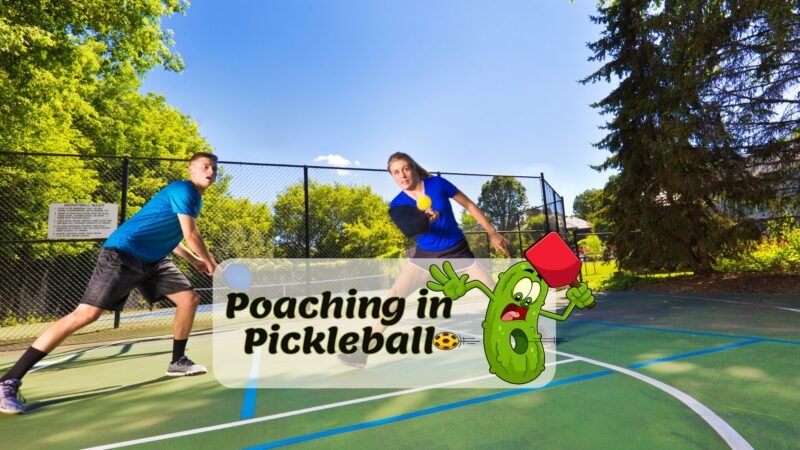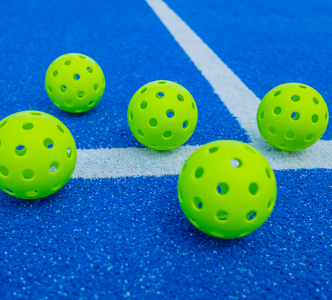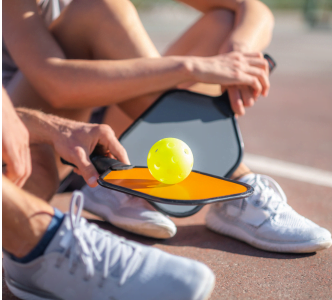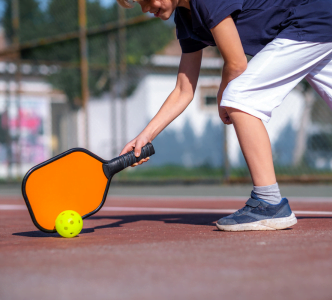In pickleball, there’s a cool move that can up your game. It’s called poaching. You might think you should stick to your side of the court and not cross over. But poaching in Pickleball changes that.
It’s when you move over to your partner’s side to hit the ball. This isn’t about breaking the rules. It’s about being smart and surprising your opponents with a smart poach.
This guide is going to show you why poaching is a game changer and we will cover all your questions about poaching. So, let’s forget the old rules and learn how poaching can make you a better player.
What is Poaching in Pickleball?
In simple terms, poaching means taking a shot that’s usually your partner’s to hit. It’s about anticipating opponent moves in pickleball and being in the right place at the right time. The key is to do it so smoothly that your opponents don’t see it coming. It’s a strategy used by players for effective teamwork who want to keep the game dynamic and pressure their opponents.
The History of Poaching in Racket Sports
Poaching isn’t new. It’s been a part of racket sports for ages. In tennis, players often poach during doubles matches to catch their opponents off guard. The concept made its way into pickleball, adding an exciting twist to the game. It shows how strategies from one sport can beautifully adapt to another, enriching the way we play and enjoy sports.
Why Pickleball Players Poach
The pickleball players poach because there are two major strategic advantages of poaching.
First, it keeps your opponents guessing. A well-timed poach can disrupt their rhythm and make them hesitant. It’s all about anticipation. If your opponents never know who will hit the ball, they’re on the back foot.
Second, poaching allows the stronger player to take more shots. This can be crucial in doubles play. If you’ve got a killer forehand, why not use it as much as possible? This is where communication and signals come into play. A nod or a quick word before the serve can set up a successful poach.
How Poaching Can Shift the Momentum of the Game
Momentum in pickleball is like a pendulum. It can swing back and forth, but a well-executed poach can grab it for your team. When you successfully poach, you’re not just winning a point. You’re sending a message. It says, “We’re in control.”
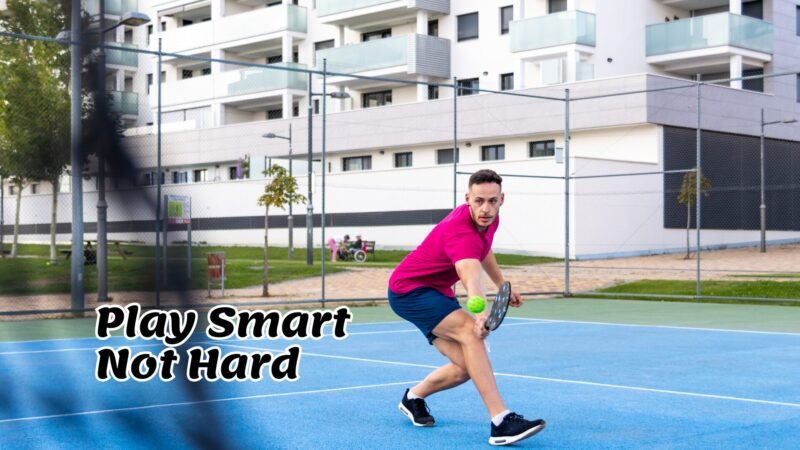
This psychological edge can be just as important as the physical one. Doubt creeps into your opponents’ minds. They start to play more conservatively, afraid of the next poach. That’s when you’ve got them. The game opens up. Shots that were risky before now feel safer. Your team can press the advantage, keeping the pressure on.
There are many tips for intermediate players but for poaching this is one of my favorite:
poaching is a double-edged sword. Timing is everything. A mistimed poach can leave your side of the court wide open. That’s why practice and teamwork are so important. Drills that improve your anticipation and reaction time are key. Working with your partner to develop a silent language of signals can turn poaching from a gamble into a strategy.
How to Beat a Pickleball Poacher
Facing a pickleball poacher can be tricky. They’re the players who dart across the court, snagging shots that aren’t technically theirs. But don’t worry, there’s a strategy to beat them. It’s all about anticipation and clever shot selection. When you see a poacher gearing up, aim your shots to the space they’ve just left. This move requires practice but pays off by keeping your opponents guessing and on their toes.
Like a poacher, you might also want to beat an aggressive pickleball player, if yes learn how to beat an aggressive pickleball player and find the secret strategies.
The Rules and Etiquette Around Poaching in Pickleball
Now, let’s clear the air, Is poaching legal in pickleball? Absolutely. The rules of pickleball allow players to move freely on their side of the court. This means crossing the centerline to hit a ball is perfectly fine. Understanding this rule can change how you view the game, encouraging a more dynamic style of play.
Is Poaching Legal in Pickleball?
Yes, poaching is legal and an integral part of advanced pickleball strategy. Knowing this can liberate your gameplay, allowing for more aggressive and strategic positioning. Embrace it, and you’ll find your game elevating to new heights.
Common Misconceptions About the Legality of Poaching
Many players, especially those new to the sport, might think poaching steps over some unwritten line of sportsmanship. But in reality, it’s all fair game. This misconception often stems from a lack of understanding of the rules or from personal play preferences. However, recognizing poaching as a legitimate strategy opens up a world of tactical play.
How to Identify Poaching Opportunities
Spotting the perfect moment to poach in pickleball can turn the tide of any game. It’s all about timing and knowing when to make your move. Let’s dive into when it’s smart to take that leap and when it might be better to hold your ground.
When is it Smart to Poach?
The best time to poach is when you see an opening that allows you to apply pressure on your opponents. This could be when the ball is slowly approaching you, and you’re in a good position to hit a strong shot. It’s also smart to poach when your opponents are out of position, giving you a clear shot to an open area of the court. Anticipating opponent moves is key here. If you can predict where the ball is going, you’re one step ahead.
When Not to Poach in Pickleball
However, there are times when poaching might not be the best idea. If you’re not in a good position or if it could disrupt your team’s flow, it’s better to stay put. Also, if poaching could leave a large portion of your court open, think twice. Your goal is to win points, not give them away.
Partner Signals and Communication
This is where communication in pickleball doubles becomes crucial. Before the game, agree on some simple signals with your partner. A nod or a hand signal can let your partner know you’re about to poach, ensuring you’re both on the same page. Effective teamwork in pickleball is about trust. Trusting your partner to make the shot if you decide not to poach is just as important.
Techniques for Effective Poaching in Pickleball
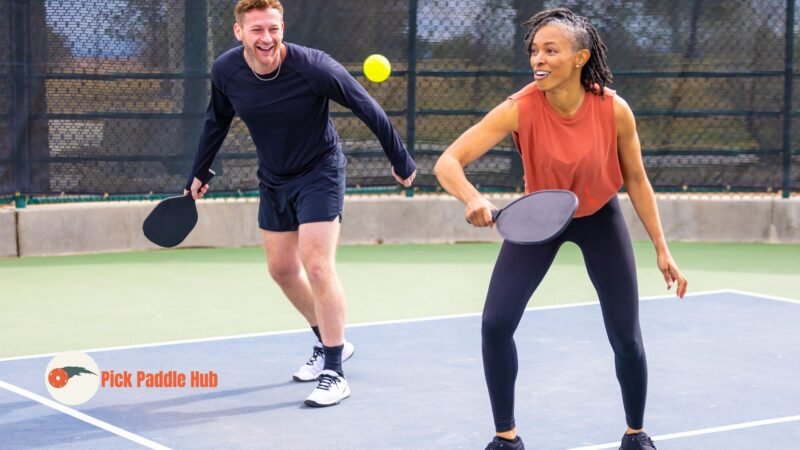
Positioning and Movement
In pickleball, where you stand and how you move can make or break your game. When it comes to effective teamwork in pickleball, being in the right position is key. For poaching, this means being ready to spring into action at a moment’s notice. You want to be close enough to the centerline so you can easily cross over to your partner’s side, but not so close that you give away your intentions.
The trick is to maintain a stance that allows for quick, explosive movements. This means keeping your knees slightly bent and your weight on the balls of your feet. Think of yourself as a coiled spring, ready to launch forward when the opportunity arises. This kind of pickleball court positioning puts you in the best spot to poach and keeps your opponents guessing.
Timing Your Move: The Element of Surprise
The best poaches are the ones your opponents never see coming. Timing your move is all about the element of surprise. Watch the game closely and look for patterns in your opponents’ play. Do they have a preferred shot they use when under pressure? Are they focusing too much on one side of the court? These are your cues to make a move.
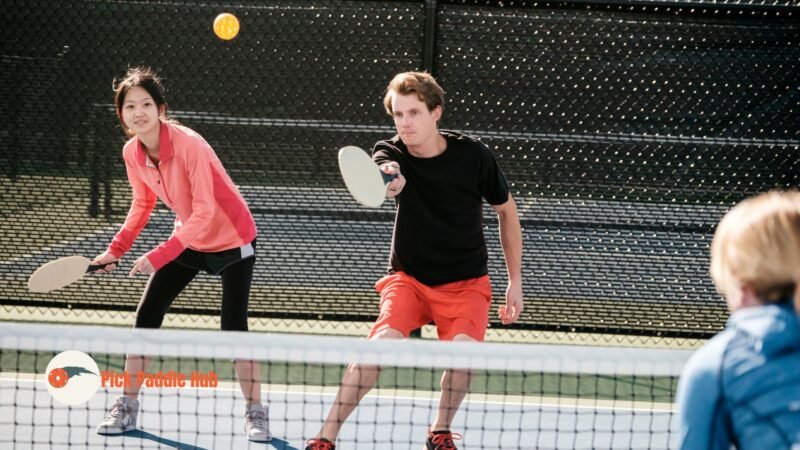
Waiting for the right moment is crucial. Too early, and you’ll telegraph your intentions; too late, and you’ll miss your chance. The goal is to wait until your opponents are committed to their shot before you make your move. This is where anticipating opponent moves in pickleball becomes a valuable skill. It’s not just about reacting to the ball; it’s about predicting where it’s going to be and being there first.
The element of surprise isn’t just about when you move, but how you move. A sudden burst of speed can be more effective than a steady approach. The goal is to catch your opponents off guard, forcing them into a defensive position and giving you and your partner the upper hand.
Implementing these techniques into your game requires practice and pickleball drills for better coordination. Work with your partner to develop signals or cues that will help you communicate your intentions without alerting your opponents.
The more you practice, the more intuitive your movements will become, transforming poaching from a risky maneuver into a powerful part of your pickleball strategy.
Strategies to Defend Against Poaching
There are three main strategies to defend against poaching. Communication, Improving Court Positioning and Anticipating. Let’s discuss these strategies one by one.
Communication
In doubles, teamwork makes the dream work. Communication in pickleball doubles is crucial. Before the game, chat with your partner about potential poaching. During play, use hand signals or quick calls to stay coordinated.
Court Positioning
Pickleball court positioning can make or break your defense against a poacher. Stay alert and ready to move. Position yourself in a way that covers potential gaps and makes it harder for the poacher to find an opening.
Anticipation
Anticipating opponent moves in pickleball is a skill that comes with practice. Watch for patterns or tells in your opponents’ behavior. This can give you a heads-up when a poach might be coming.
How to Adjust Your Gameplay When Facing a Poacher
1. Using a variety of shots can keep a poacher on their toes. Mix in some lobs, drop shots, and drives. Changing your pickleball shot selection makes it harder for them to predict your next move.
2. Effective teamwork in pickleball is about more than just communication. Practice drills that improve your coordination and help you work more seamlessly together. This can reduce the opportunities for an opponent to poach successfully.
3. Sometimes, the best strategy is to keep your cool and play your game. Improving pickleball doubles play involves focusing on your strengths and not getting rattled by your opponents’ tactics.
What We Can Learn from the Pros About Poach in Pickleball
Watching the pros, we learn poaching is more than just crossing the court. It’s about communication with your partner and knowing when to take a risk. The pros are masters at the shot selection and court positioning, making every poach count.
They also show us the value of practice. Through pickleball drills and training exercises, players can improve their coordination and timing, essential skills for successful poaching.
Moreover, professional players demonstrate the significance of pickleball strategy tips. They know when to play offensively and when to set up their partner for the next shot. This level of strategic play is something all pickleball players can aspire to.
Conclusion
Getting good at poaching in pickleball means more than just moving around. It’s about smart strategy, talking well with your partner, and guessing what your opponents will do next. The top players always keep learning and trying new things. So, use poach in pickleball and these tips, practice a lot and have fun playing.
FAQ’s
Can poaching be overused?
Absolutely, like any good strategy, there’s a time and place for poaching in pickleball. It’s a powerful move when used wisely. But, if you overdo it, you might just find yourself out of position more often than not. This leaves your side of the court wide open for opponents to score. The key? Balance. Mix up your plays and keep your opponents guessing. That’s how you make poaching a part of your winning strategy, not a one-way ticket to trouble.
How do beginners learn to poach effectively?
For beginners, learning to poach starts with observation and practice. Watch how experienced players do it. Notice the timing, the coordination with their partner, and the situations where they choose to poach. Then, start practicing in low-stakes games or drills. Communication with your partner is crucial. Let them know you’re going to try poaching. As you get more comfortable, you’ll start seeing opportunities to poach and make those game-changing plays naturally.
Is it OK to poach in pickleball?
Yes, it’s more than OK; it’s a part of the game! Poaching is a legitimate strategy used to surprise your opponents and take control of the game. It shows you’re thinking ahead and ready to make bold moves. Remember, pickleball is as much about strategy as it is about skill. So, go ahead and poach when the moment feels right. Just make sure you and your partner are on the same page about it.
Why is it called poaching?
The term “poaching” in pickleball (and tennis) likely comes from the idea of crossing into territory that’s not originally yours, much like the world’s original meaning related to hunting in areas you’re not supposed to. In pickleball, when you poach, you’re stepping into your partner’s area to take a shot, hoping to catch your opponents off guard. It’s about being bold and taking a chance, hoping it pays off with a point for your team.

